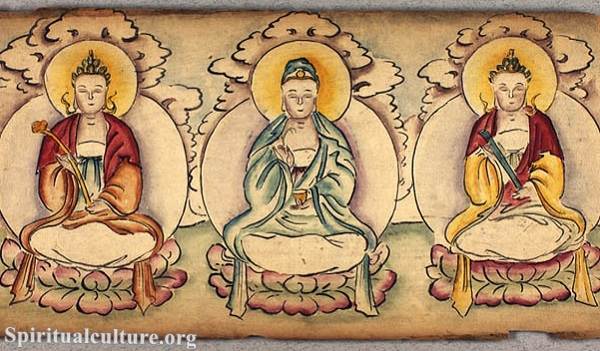Buddhism, one of the world’s most profound and influential religions, has intrigued spiritual seekers for centuries. From its origins in ancient India, it has spread across the globe, evolving into a variety of schools and practices. One of the most significant of these is Mahayana Buddhism, often referred to as the “Great Vehicle.”
This article aims to unravel the Mahayana meaning and explore its role and significance in the broader context of Buddhism.
Mahayana Meaning: An Introduction
The term “Mahayana” is derived from the Sanskrit words “Maha,” which means “great,” and “Yana,” meaning “vehicle.” Thus, “Mahayana” translates to the “Great Vehicle.” This name reflects the school’s primary goal: to provide a path or ‘vehicle’ for all sentient beings to achieve enlightenment and to become Buddhas themselves. This is a major distinguishing feature of Mahayana Buddhism, which emphasizes the ideal of the Bodhisattva, an enlightened individual who postpones their own final enlightenment to assist others in achieving it.
The Mahayana meaning also embodies the aspiration to comprehend the nature of reality and the universe more deeply and completely. It focuses on the interconnectedness of all beings and the concept of emptiness, suggesting that all phenomena are empty of a separate, inherent existence.
Mahayana Buddhism: An Overview
Mahayana Buddhism emerged around the 1st century BCE, marking a significant shift in the interpretation and practice of Buddhism. It developed in India and then spread throughout East Asia, becoming the dominant form of Buddhism in China, Japan, Korea, and Vietnam.
The Mahayana school is characterized by a more flexible and inclusive approach to Buddhist teachings. It accepts a larger canon of scriptures than the earlier Theravada tradition, including the Lotus Sutra, the Heart Sutra, and the Diamond Sutra. These texts underscore the Mahayana emphasis on compassion and the Bodhisattva path, along with the concept of emptiness.
Mahayana and the Bodhisattva Ideal
Central to the Mahayana meaning is the Bodhisattva ideal. A Bodhisattva is an enlightened being who, out of boundless compassion, forgoes Nirvana (final enlightenment) to assist all other beings in their journey towards enlightenment. This altruistic ideal is encapsulated in the Bodhisattva vow, a commitment to save all sentient beings from suffering.
This emphasis on compassion and altruism distinguishes Mahayana Buddhism from other forms of Buddhism. It posits that anyone can aspire to become a Bodhisattva and work towards the betterment of all beings, making enlightenment a collective rather than an individual goal.
Mahayana Buddhism and the Nature of Reality
The Mahayana meaning is also reflected in its philosophical perspectives, particularly concerning the nature of reality. Mahayana Buddhism asserts that all phenomena are empty of inherent existence, a concept known as “sunyata” or emptiness. This does not mean that things do not exist but rather that they are interdependent and continually changing, devoid of a permanent, independent essence.
This understanding of reality encourages a shift from a self-centered perspective to a more compassionate, interconnected worldview. It suggests that by recognizing the interdependence and emptiness of all phenomena, we can cultivate compassion and wisdom, key elements in the path to enlightenment.
Conclusion
The Mahayana meaning lies in its expansive vision of Buddhism, one that embraces a wide range of teachings and practices aimed at attaining enlightenment for the benefit of all beings. It champions the Bodhisattva ideal, emphasizes compassion and altruism, and offers profound insights into the nature of reality. By understanding the Mahayana meaning, we can appreciate the depth and diversity of Buddhist thought and its enduring relevance to our contemporary world.



